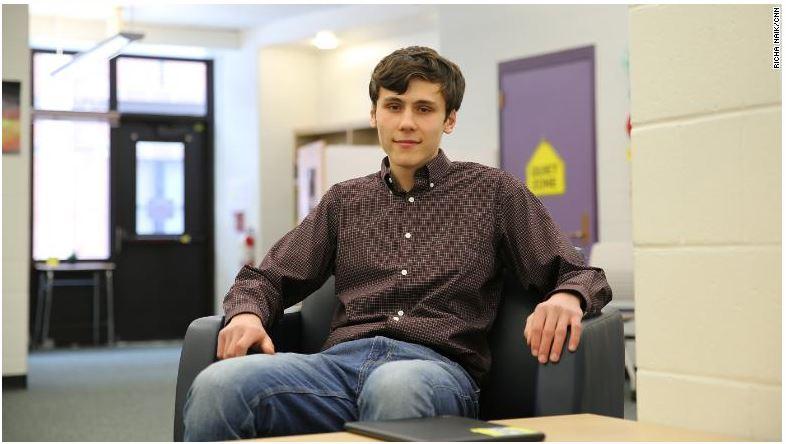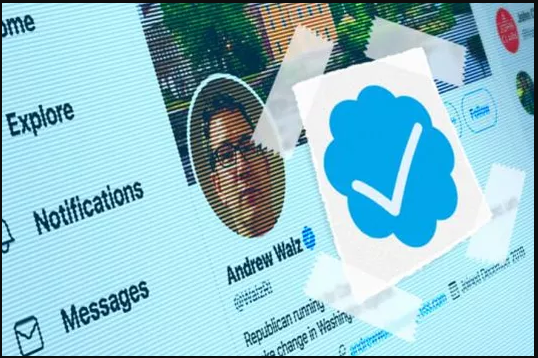A high school student created a fake 2020 candidate. Twitter verified it
Andrew Wallace, from New York (CNN Business), calls himself a "proven business leader" and an "enthusiastic student advocate". Waltz, a Rhode Island Republican, is running for Congress under the slogan "Let's make change together in Washington," or so confirm his Twitter account.
Earlier this month, the Walz account acquired the desired blue Twitter mark as part of the company's broader campaign to validate several of the current Senate, House of Representatives and Governor candidates for public office. Twitter has put this effort as a key to helping Americans find reliable information about politicians before the 2020 elections.
politicians before the 2020 elections.
But there is only one problem: Falls do not exist. The candidate is to create a 17-year-old high school student from New York State, as CNN Business discovered.
The student, whom CNN Business spoke to with permission from his parents and agreed not to mention him as a minor, said he was "bored" during holidays and created a fake account to demonstrate electoral integrity efforts on Twitter.
The blue check mark is a tag on Twitter and then copied by Facebook. Often delivered to prominent accounts belonging to journalists, politicians, government agencies and companies. This functionality is essential for Twitter's goal and is to help users find reliable information on the platform, often from a verified news checker.
The fact that a teenager who does not use almost anything from resources was able to quickly create a fake candidate in his spare time and that Twitter proved to raise doubts about the company’s willingness to deal with how to hold the 2020 elections on its program. A Twitter spokesperson recently told us: "Our worst case scenario is that we are checking out someone who is not a real candidate."

Last year, he criticized Twitter for saying it would only check candidates if they won the primary. In December, Twitter changed its policy and said it would check key candidates to help improve voter information on the platform.
Checking the wrong candidate is an example of the challenges social media companies can face when they try to make changes aimed at making their platforms more transparent.
After CNN Business contacted Twitter about the fake account, the company suspended it. "Creating a fake candidate account violates our rules and the account has been permanently suspended," a Twitter spokesman said.
The wrong candidate verification came when real candidates across the U.S. complained that Twitter had not verified their accounts. A key Democratic candidate in Georgia told CNN Business that lack of verification could negatively affect online donations for her campaign.
Twitter has told CNN Business that it has verified about 1,500 candidates since the expansion of the verification program was announced in December.
Create a false filter
A high school student said he was interested in how social media platforms attempted to combat electoral interference after knowing the history class about Russia's interference in the 2016 presidential election in the United States.
After Twitter announced in December that it would give a blue checkmark to verify all of the candidates for Congress and Governor in 2020, a high school student decided to demonstrate how the company was verifying that the candidates were indeed the ones they said were, and if it existed in the first place.
"During the Christmas holidays I felt a bit bored and learned a lot from history class, but also in the news they spoke more about wrong information," a high school student told CNN.
The teenager told CNN it took about 20 minutes to create a website for his fake candidate and five minutes to create a Twitter account.
As for the photo of the fake candidate, he said that he downloaded an image from a website called This Person Does Not Exist. The site uses artificial intelligence to generate realistic faces for fake people. The same type of technology is involved in creating deep videos, which have become a source of national security concern.
The student then sent information about the fake candidate, including a brief survey, to Ballotpedia, a nonprofit site that is announced as an encyclopedia of American political candidates. Twitter announced in December that it would partner with Ballotpedia "to use its expertise to define the official Twitter campaign accounts for the candidates."
Twitter and Ballotpedia did not request any identity or documents proving that Andrew Walz was a real candidate, or even a real person, according to the student.
"Ballotpedia has made a mistake here for sure," said Jeff Palai, editor of Ballotpedia, in a comprehensive response to CNN Business questions.
In explaining how Ballotpedia approved the wrong candidate without providing evidence that the candidate formally introduced it, Pallay explained: "Many candidates create campaign activities, such as creating an online presence, long before the deadlines for submitting their states. We have noticed the" Advertiser Candidate "category. Versus "officially presented candidate."
Palai said that Ballupedia sends candidate lists to Twitter once a week, which is used as part of the Twitter verification process. Palai said that on Twitter Twitter did not identify the "advertisers" and "officially filed" candidates on those lists. Palai said that Palotpedia will make this distinction in the future.
As of Thursday night, the Walz account was still on Ballotpedia, but a message was added to the page to inform users that Ballotpedia had been informed that "Andrew Walz may not be a legal candidate for a position" and they were investigating.
A few weeks after Walz's file was published on Ballotpedia, Twitter contacted the fake candidate to verify his account, the teenager said. He said that Twitter's only request is to add a background image at the top of his account.
The fake Twitter account had only 10 followers as of Wednesday. He told CNN Business that the student had not deliberately promoted the account because his intentions were testing the Twitter systems rather than confusing the electorate.
"I want Twitter to succeed. I like Twitter. I think it's a great platform and I've learned a lot from it," said the teenager.
He said Twitter and Ballotpedia can take simple steps to verify that the candidate is real, such as checking the FEC records or requesting proof of identity.
"I shouldn't have done that."
A real candidate fights
While Twitter verified the account of a fake candidate, real candidates across the country complained that Twitter had not verified their accounts.
Junckel Peters, who is participating in the Democratic primary in the thirteenth Georgia constituency, told CNN Business that his campaign had contacted Twitter several times to verify his account since December. Peters also has a glimpse of Ballotpedia.
During an interview at his campaign office outside Atlanta on Tuesday, Peters said that lack of validation could affect whether people are donating to his campaign.
When CNN Business introduced a Peters Twitter account, he said that his website is linked to the campaign team account, not his own account. Twitter said this discrepancy had delayed verification of the Peters account. Twitter verified the account after CNN contacted it on Thursday.
"When you apply for money online and want to do the best you can when managing a campaign, everything is important," said Peters, who faces a traditional headline with a verified account.
On Tuesday, political post The Hill posted that Twitter has not yet verified dozens of candidates.
A Twitter spokesperson told CNN Business on Thursday: "We have implemented a strict process to ensure that, through our partnership with Ballotpedia, we accurately determine and verify the legitimate Twitter accounts of the candidates. Sometimes, this entire process can cause a short delay between when the candidates qualify For the initial vote and when the candidates are verified. "
2020
With the upcoming elections of 2020 in the United States of America. In the U.S., there is pressure on Twitter and other platforms to address a wide range of misinformation threats.
The student told CNN: "I had no malicious intentions. I just wanted to try to see if this could happen. So, if someone with bad intentions wants to do this, Twitter knows it now and can take steps to fix it."
The US intelligence community says that opponents in the United States, including Russia, are trying to interfere with the 2020 elections. They are sophisticated actors with good resources.
The concerns of the intelligence community are taken into account by the 17-year-old: "If I can do this as a high school student, imagine what a team of highly trained people can do this."

